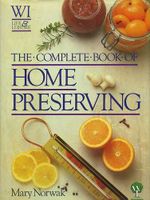Advertisement
Basic freezing rules
Appears in
By Mary Norwak
Published 1978
- All food must be prepared without delay. Meat, poultry and fish should be prepared as soon as they are ready, and in cool conditions. Fruit and vegetables suffer if they are not processed immediately after picking. Cooked dishes should be cooled rapidly for freezing, and leftovers processed as soon as the meal is over.
- Food must be packed in moisture-vapour-proof wrapping and firmly sealed. Air should be removed, but a headspace must be left in rigid containers for the expansion of liquids. Strongly-smelling or highly-flavoured foods should be overwrapped.
- Food must be frozen rapidly. Animal products and cooked foods in particular can deteriorate quickly. Fast freezing slows up the formation of ice crystals which can spoil the texture of food.
- Only the amount of fresh food which can be frozen safely within 24 hours, should be frozen at one time. This is usually the amount which would normally fill one-tenth of the total storage capacity. Overloading the freezer with fresh food will result in slower freezing.
- Food must be stored at the correct temperature of 0°F/–18°C. High quality storage life is only ensured when food is stored at this temperature.
- Food must be thawed and/or cooked correctly. Rapid thawing results in toughness and loss of texture and flavour.

